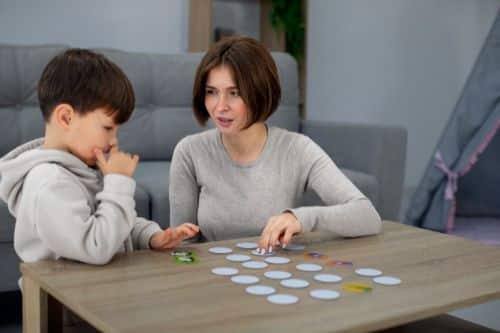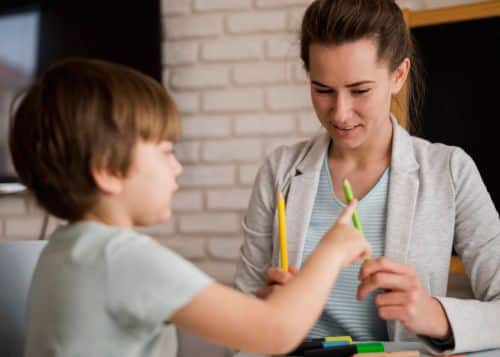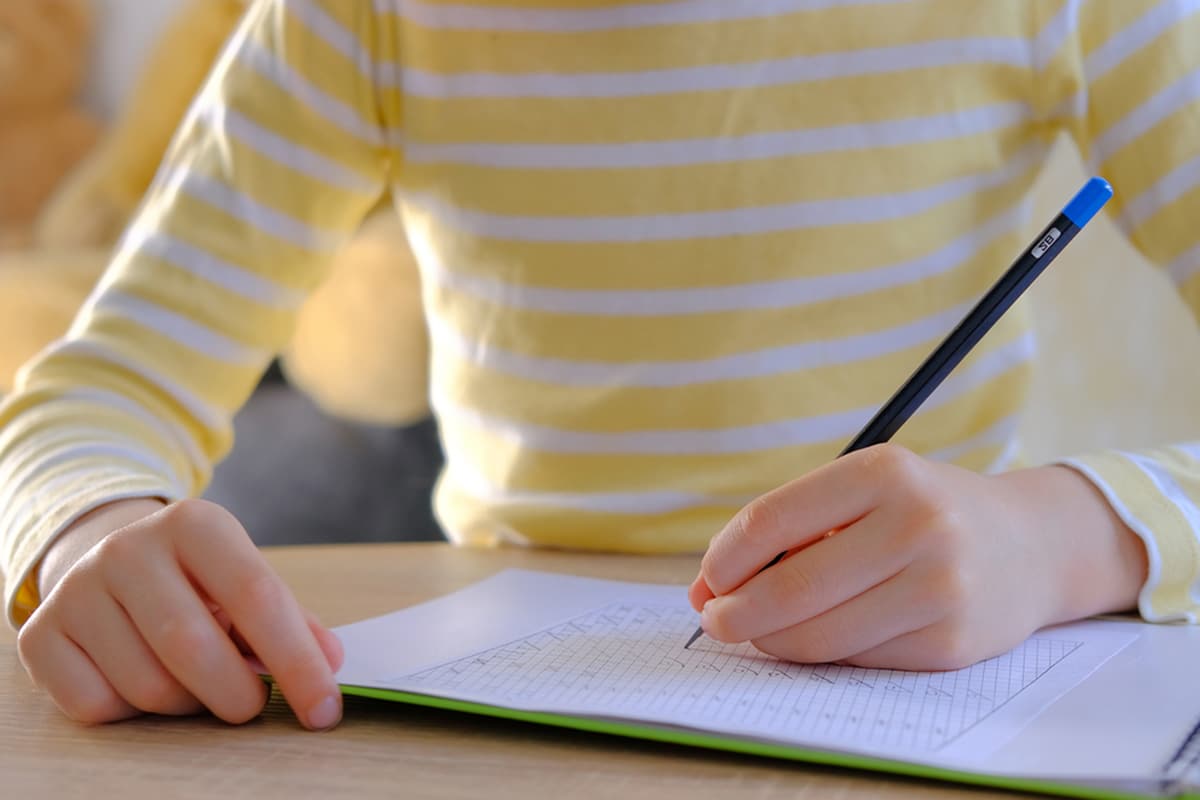Dealing with Sensory Processing Disorder (SPD) involves a path that necessitates getting the diagnosis and implementing interventions.
It’s crucial to conduct precise assessments, for SPD. One of the therapies, for treating Sensory Processing Disorder is Applied Behavior Analysis (ABA) therapy. This method utilizes planned activities and positive encouragement to enhance integration and overall well being.
Understanding Sensory Processing Disorder and Its Impact
 Sensory Processing Disorder (SPD) occurs when the brain has difficulty processing information leading to individuals being either overly sensitive or not sensitive enough to touch, sound, taste, smell or sight. These challenges, in processing input can manifest in ways and significantly impact daily activities.
Sensory Processing Disorder (SPD) occurs when the brain has difficulty processing information leading to individuals being either overly sensitive or not sensitive enough to touch, sound, taste, smell or sight. These challenges, in processing input can manifest in ways and significantly impact daily activities.
Defining Sensory Processing Disorder
Sensory Processing Disorder (SPD) often manifests in childhood. Can persist into adulthood. 1, in 20 children may experience this condition.
If left unaddressed SPD may present challenges in aspects of life such, as coordinating movements socializing with peers regulating emotions and acquiring knowledge.
Common Signs and Symptoms of SPD in Children
Spotting the signs of SPD early on is key to getting the right help and treatment. Even though these symptoms can be different for everyone, there are a few common ones to look out for:
- Being really sensitive or not sensitive enough to things like touch, sound, taste, smell, and what you see.
- Having trouble with moving smoothly or keeping your balance.
- Not liking certain textures or noises.
- Staying away from specific activities or places.
If you think that either you or your kid might have SPD, it’s important to go get tested for it. Catching this disorder early and starting intervention sooner rather than later can make a big difference in managing SPD.
Exploring the Link Between ABA Therapy and SPD
ABA therapy relies on evidence to comprehend and modify behaviors effectively. It emphasizes assisting individuals, in processing input through activities promoting positive behavior and addressing negative patterns. This approach helps individuals, with Sensory Processing Disorder enhance their processing abilities and daily functioning.
The Role of ABA in Managing SPD
When dealing with Sensory Processing Disorder (SPD) Applied Behavior Analysis (ABA) may involve activities providing incentives, for behavior and strategies to modify behaviors. These actions aim to support individuals with SPD in enhancing their ability to interpret information and enhance their functioning. ABA therapy is typically administered by professionals such, as behavior analysts or occupational therapists who specialize in addressing challenges.
A Closer Look at ABA Therapy Techniques
ABA therapy focuses on employing techniques to support individuals, with Sensory Processing Disorder (SPD) and enhance integration.
Key ABA Techniques Used for Children with SPD
ABA techniques are important for helping kids with SPD. They’re all about making sense of the world around them in a better way.
Here’s how they do it:
- Through structured activities: By setting up specific tasks that let children safely experience different sensations, ABA therapists make it easier for them to handle sensory stuff over time. These planned-out activities teach kids ways to deal with feeling overwhelmed by their senses.
- With positive reinforcement: When kids respond well to sensory input or manage their reactions nicely, ABA therapists give them kudos. This encouragement helps children learn the right ways to react when things feel too much.
- Using behavior modification strategies: Sometimes need a little tweaking so that children can act more fittingly in response to what they sense. That’s where modification comes into play; it guides children towards actions that work better for dealing with SPD challenges.
By applying these approaches, ABA therapy plays a big part in weaving together sensory experiences smoothly for those dealing with SPD issues.
Customizing ABA Therapy to Meet Individual Needs
Therapists work one-on-one Therapists work closely with children and their families to create treatments tailored to address the difficulties each child encounters. By understanding the needs of each child therapists can devise strategies to assist them in processing information more effectively and improving their daily functioning. ABA therapy offers support that targets the challenges of Sensory Processing Disorder, in children enabling them to manage their sensory processing issues with success.
Integrating ABA Therapy and Sensory Processing Strategies
By combining ABA therapy focused on developing and teaching skills with approaches that assist individuals, in managing challenges a comprehensive support network is established for those coping with SPD.
Combining Sensory Integration Therapy with ABA
ABA places an emphasis, on understanding the reasons behind our actions and how to modify behaviors using proven techniques.
By combining integration therapys emphasis on addressing sensory related challenges with ABAs strategies for enhancing skills and behavior management these two approaches complement each other seamlessly.
In settings professionals, from both fields collaborate to develop plans tailored to each persons unique needs. These plans may incorporate engaging activities that not only stimulate the senses but also teach positive behavioral changes through reward systems and other methods.
This integration of addressing issues and behavioral obstacles offers a comprehensive treatment approach by simultaneously addressing both aspects acknowledging their interconnectedness. For individuals facing difficulties processing sensations or struggling with autism related issues integrating these methodologies could offer support to facilitate navigating life more smoothly.
Practical Tips for Parents on Integrating Therapy Methods at Home
Parents have a big job in helping their kids who struggle with sensory processing issues. This help is important both when the child is getting therapy and at home too. Bringing what they learn in therapy into everyday life can really boost how well these strategies work, making sure the child keeps getting better. Here’s some advice for parents on how to do this:
- Talking to therapists helps a lot because it lets you know what your kid should be working on and which activities could help them practice those skills at home.
- Making your house more comfortable for someone with sensory needs means creating spaces where they can feel calm and cutting down on things that might bother them or distract them too much.
- With daily routines, try adding fun stuff that also gives good sensory input, like swinging or playing with toys that are interesting to touch.
- Using pictures or schedules can make it easier for your kid to understand what comes next in their day, which helps everything go smoother.
- It’s great if you can find ways for your child to hang out with other kids, through playdates or group activities. This kind of thing is super helpful for building social skills.
- A “sensory diet” isn’t about food but about finding activities that give just the right amount of stimulation; working together with therapists will get you there.
- And don’t forget about using tips from therapy sessions on managing at home – staying consistent here makes all the difference.
By following these steps, parents really become part of their child’s journey toward handling sensory processing challenges better. Teaming up closely with therapists and bringing those lessons into the household strengthens everything learned during treatment sessions.
Challenges and Solutions in SPD and ABA Therapy
People with SPD and ASD might find therapy tough. It’s important to get and tackle these issues right for the therapy to work well. Here are some usual problems they face in therapy, along with ways to solve them:
- With sensory processing issues, folks with SPD can be really sensitive or not sensitive enough to things around them. This can make being in a therapy session hard because they might feel too much or try to avoid certain feelings.
Solution: Therapists should slowly bring in different sensations but keep them comfortable and supportive. Slowly getting used to these sensations while getting positive feedback helps people learn how to deal better.
- For those who have trouble keeping their attention mainly because of SPD or ASD, staying focused during sessions is a struggle.
Solution: Breaking tasks into smaller parts and giving clear instructions helps a lot. Using pictures as guides and having visual plans makes it easier for them.
- Communication troubles mean some individuals may not say what they need or take part well during sessions.
Solution: Using pictures and devices that help communicate differently, like AAC devices could improve communication within sessions.
- Resistance towards change happens when routines shift which is often tricky for someone dealing with SPD/ASD.
Solution: Making changes bit by bit plus talking clearly about any new steps will ease this issue using picture schedules also aids preparation against sudden shifts
- A big hurdle is applying what’s learned outside of the therapist’s office; skills shown there don’t always show up elsewhere
Solution: Therapy activities mimicking real-life scenarios encourage skill use everywhere else working alongside parents/caregivers ensures practice continues at home
Addressing Common Challenges in Therapy for SPD
Dealing with SPD in therapy can be tricky, but it’s really important to find the right ways to help. Here are some of the tough parts and how we can make things better:
- When people with SPD get too much sensory stuff coming at them, they might feel overwhelmed. This makes it hard for them to do well in therapy.
- To fix this, therapists can make sure the place feels calm by cutting down on too many sights or sounds and giving breaks when needed. Slowly getting used to these sensory inputs while learning how to chill out can also do wonders.
- Sometimes, folks might not want to join in on therapy activities because their senses are extra sensitive.
- A good way around this is to start off easy and slowly upping the challenge. Mixing in fun sensory activities that they like could encourage more participation.
- Keeping attention during sessions is another hurdle for individuals dealing with SPD as focusing becomes a big task.
- Therapists have tricks up their sleeves like using pictures for support, keeping a routine so there’s no surprise what comes next, and taking short breaks often. Bringing interests into sessions helps keep everyone interested.
- Applying what’s learned in therapy outside of those four walls doesn’t always come naturally.
- Practicing real-life scenarios during sessions and having parents or teachers continue these exercises at home or school ensures skills don’t just stay within session boundaries.
- Managing emotions is tough when you’re already trying hard with other aspects of SPD; expressing feelings properly becomes even harder under stress.
- Teaching deep breathing techniques along with calming strategies tailored specifically towards managing one’s emotions helps greatly here—creating an understanding atmosphere aids significantly as well.
Strategies for Overcoming Obstacles in ABA Therapy
ABA therapy is really good for helping people with SPD and ASD. But, it’s not always smooth sailing. There are some bumps along the way that need to be handled carefully. Here’s a look at what those challenges might be and how to tackle them:
- When it comes to motivation, sometimes folks with SPD and ASD aren’t too keen on joining in on therapy activities. This can make ABA less effective.
- With this issue, therapists find ways to make sessions more appealing by using fun materials or activities that the person likes, alongside lots of positive feedback. Mixing in things they’re interested in helps boost their willingness to participate.
- Dealing with changes can be tough for individuals with SPD and ASD since they often prefer sticking to routines. Introducing new stuff or changing behaviors isn’t easy.
- To ease into changes, therapists should take small steps at a time while keeping communication clear through visual aids if needed. Breaking down tasks makes adapting easier for them.
- The challenge of applying skills learned during therapy across different situations is common too; skills shown off during sessions don’t always translate well outside of them.
- Therapists work around this by setting up scenarios similar to real life within sessions so these skills get practiced more broadly. Teaming up with parents, caregivers, and teachers ensures these abilities are encouraged everywhere.
- Sometimes communicating gets tricky because many dealing with SPD and ASD have trouble talking about what they need or want clearly during therapy.
- Using pictures as cues or tech devices designed to aid communication can help bridge gaps here; working closely alongside speech therapists also boosts communicative abilities significantly.
- Lastly, sensory issues mean engaging fully in ABA tasks could feel overwhelming mainly because processing sensory information feels extra challenging
- Adjusting how therapies run—like allowing breaks when needed or tweaking surroundings—makes participating much smoother while combining sensory integration methods improves overall results from ABA efforts.
Conclusion
In summary ABA therapy stands out as a treatment, for people dealing with SPD. With customized techniques and individualized strategies ABA therapy strives to boost integration skills leading to everyday functionality and quality of life. By honing in on each persons requirements and obstacles therapists can successfully tackle processing issues promoting notable advancements in handling SPD symptoms.
For families residing in Maryland and seeking specialized ABA services, MoveUp ABA offers comprehensive support and expertise in addressing sensory and behavioral challenges. Our commitment to personalized care and evidence-based practices ensures that each client receives targeted interventions aimed at maximizing their potential and achieving meaningful outcomes. Reach out to us today!
Frequently Asked Questions
How Long Does It Take to See Results from ABA Therapy?
When it comes to how long it takes to see changes from ABA therapy, there’s no one-size-fits-all answer. It really depends on the person’s own needs, how often and consistently they’re getting therapy, and what goals they’re working towards. Getting started early with regular sessions can make a big difference in seeing improvements quickly.
Can ABA Therapy Be Used for Adults with Sensory Processing Issues?
ABA therapy is not beneficial, for children diagnosed with Autism Spectrum Disorder (ASD) or Sensory Processing Disorder (SPD. Can also offer assistance to adults grappling with sensory processing difficulties. This therapeutic approach delves into comprehending and modifying behavior using established techniques rendering it applicable to individuals of all ages.
For adults undergoing challenges such as navigating situations, managing behaviors and incorporating stimuli ABA therapy can provide valuable assistance. The methodology is tailored to suit the requirements and objectives of each individual since what may be effective for children may not necessarily be suitable, for adults.








